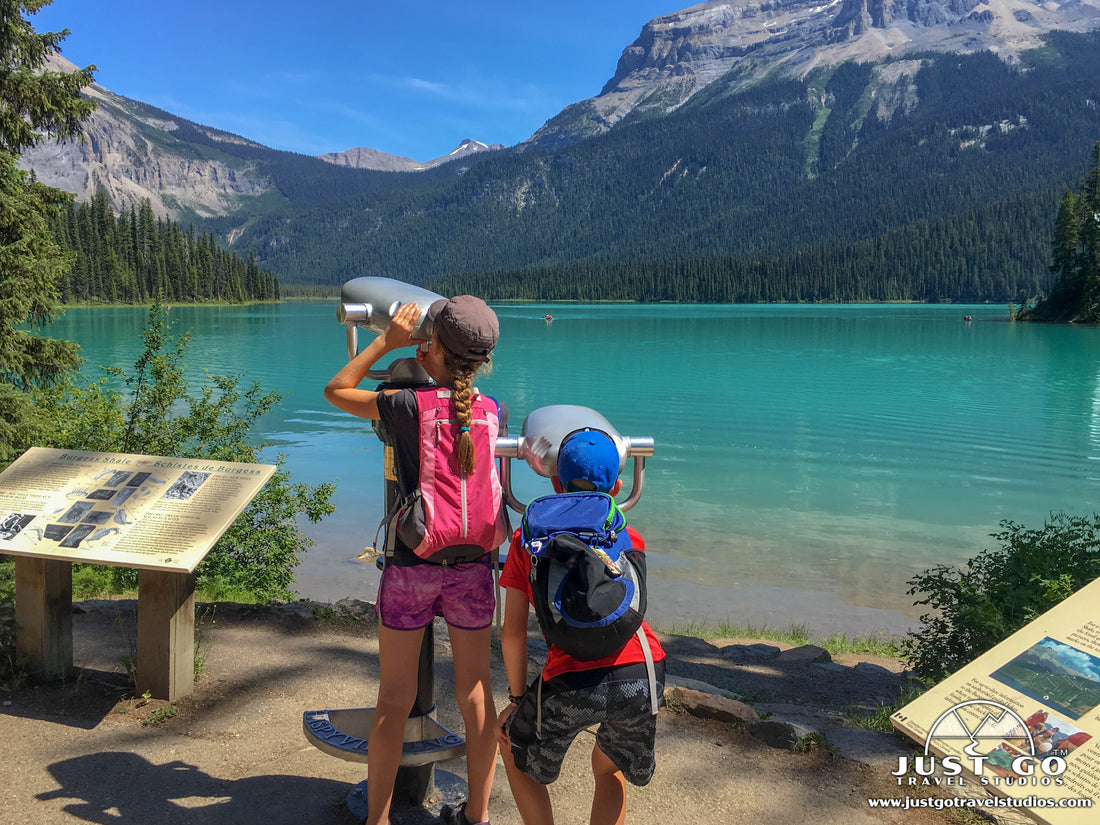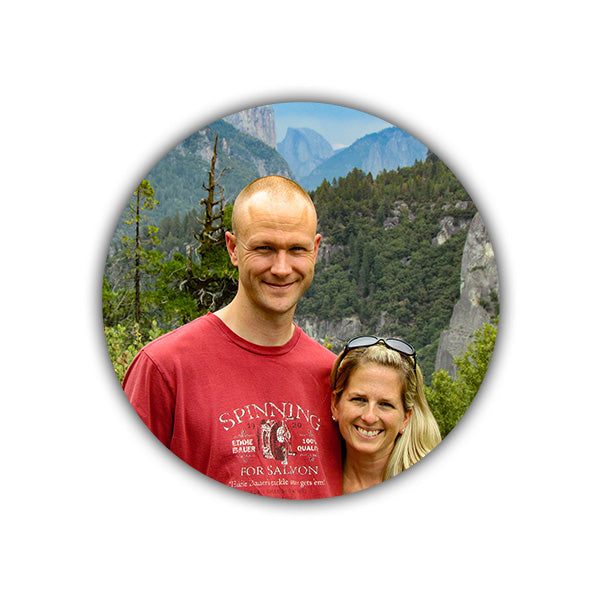
Yoho National Park - Things to Do, Best Hikes & Camping
Peter BrahanOn the border of British Columbia and Alberta sits Yoho National Park. Bordered on the east by the well-known Banff National Park and to the south by Kootenay National Park, Yoho is just barely on the western side of the Continental Divide.
Yoho National Park, though quite small and less frequently visited than nearby Banff National Park, was actually the 2nd National Park in Canada (after Banff) and was established in 1886.
Even though over 4 million people visit Banff each year and is only about an hour away, only approximately 700,000 visitors make the effort to see this wonderful and relatively quiet park. Part of this is due to the fact that Yoho National Park is mainly a summertime destination (whereas Banff is set up well to draw in visitors throughout the year). The other reason is Yoho National Park is relatively undeveloped (and without an extensive amount of lodging or restaurants in the park), which is a stark difference when compared to Banff.

We visited Yoho National Park during the day after an early morning hike in Banff National Park. For us, Yoho offered a slower pace and the opportunity to escape from the massive crowds in and around Banff. If you are able to set aside a day when visiting the area to spend inside of Yoho National Park, we’re convinced that you won’t be disappointed with your decision to do so!
Here are some tips on what you can expect to see and do in side of Yoho National Park.
ACTIVITIES IN YOHO NATIONAL PARK
LAKE O’HARA AREA
Lake O’Hara and the surrounding area is one of the most popular destinations inside of Yoho National Park. Bordering Banff National Park, Lake O’Hara can get quite busy during the day. Reservations to access the lake are required and should be made well in advance.
Lake O’Hara has incredible scenery (some say even better than Lake Louise) and is also a wonderful place to use as a home-base while you hike the amazing nearby landscape.
When visiting the Lake O’Hara area our recommendations include:
- Hiking. Lake O’Hara trails are wonderful, and the area is well-known for its hiking. It’s hard to pick the best, but here are a few that we recommend:
- The Lake O’Hara Shoreline Trail is an easy, 1.7-mile (round-trip) loop that travels around Lake O’Hara with a total of 177 feet elevation gain. This beautiful trail is the easiest way to see the lake. If you are staying in the area, then hiking on this trail more than once during different times of day will offer the opportunity to capture incredible photos with different light.
- The Opabin Plateau Circuit is a moderate 4.1-mile round-trip hike that starts along the shores of Lake O’Hara before heading south. Continuing along Hungabee Lake the trail then arrives at a plateau that overlooks Opabin Lake. This trail gains 1,125 feet in total elevation along the hike, with most of it happening in the 0.5-miles after departing the shoreline of Lake O’Hara.
- The Lake Oesa Trail is a moderately challenging 6.9-mile round trip trail that passes by Lake O’Hara on the way to the east before looping around Lake Oesa. You’ll have to climb over 2,300 feet on this hike, but be prepared for some of the most amazing scenery on the planet!
- The Lake McArthur and Big Larches Loop Trail is a moderate 4.4-mile (round-trip) hike that climbs about 1,200 feet as it climbs past the small Schaffer Lake on its way to Lake McArthur. For those feeling up to it, you can climb up to one of the nearby mountain peaks, including Park Mountain which offers a 360-dgree view and is over 2,000 feet above Lake McArthur. This will add a total of 4.6-miles on to the trail, for a total of 10 miles.
- Reservations. Ahead of your visit to the Lake O’Hara area, be sure to make reservations. Only a limited number of visitors are allowed each day. You can hike on the 11 km road or make reservations on the bus through Parks Canada.
EMERALD LAKE AREA
Emerald Lake is one of the easiest scenic locations to access in Yoho National Park. With a large parking lot and an access road that allows parking on the shoulder, Emerald Lake is much more accessible than Lake O’Hara. With convenience comes crowds, so be prepared.

Emerald Lake is strikingly similar to Lake Louise, albeit smaller and less crowded. When visiting Emerald Lake, our recommendations include the following:
-
See the Natural Bridge. Crossing the Kicking Horse River is a rock formation that has formed a Natural Bridge. The bridge can be reached by car on Emerald Lake Road, 1.9 miles from the intersection with the Trans-Canada Highway in Field.

Natural Bridge Image provided by Ovedc from Wikimedia Commons
- Hiking. The best hiking starts right near the parking area for Emerald Lake. We recommend the following:
- The Emerald Lake Loop Trail is an easy, 3.2-mile (round-trip) loop around Emerald Lake. With little elevation gain, this trail is a great leisurely walk. Most of the trail is shaded, with the exception of the north side of the lake. This trail intersects with the Yoho Pass Trail and the Emerald Basin Trails.

- The Emerald Lake Trail is a moderate, 6.7-mile hike that includes the Emerald Lake Loop and an offshoot up the Emerald Basin Trail. This hike gains over 1,200 feet, with the bulk of the incline occurring over a half-mile. This is one of the top-rated trails in the park, as it travels to the glacier that feeds Emerald Lake.
- The Hamilton Lake Trail is a challenging, 5.8-mile hike (round-trip) that climbs nearly 3,000 feet. The steady incline ends at Hamilton Lake, which is small relative to Emerald Lake and quite desolate due to the work required to get here. The lake has a similar color to that of Emerald Lake, and there is a good chance that you’ll have it all to yourself.
TAKAKKAW FALLS AREA
Situated at the end of Yoho Valley Road (which is closed for most of the year due to snow) is the beautiful Takakkaw Falls Area. Plan on it taking at least 30 minutes to get here from Field. The road is windy and not made for long vehicles-not in the least! The drive from field is quite beautiful, as it follows a rushing river for most of the drive.


The main attraction in this area is Takakkaw Falls itself, but there is plenty of hiking from here as well. There are also quite a few picnic tables near the parking lot, making it a great spot to spend a bit of time as you watch the falls.
- Experience Takakkaw Falls. At over 1,200 feet in elevation drop, this is the second tallest waterfall in Canada (the tallest is Della Falls). The water that feeds this waterfall is from Daly Glacier, and it sprays onlookers generously (but don’t worry, it’s just misty). The best way of seeing the falls is by taking a quick walk on the Takakkaw Lake Trail, which heads on the east side of the lake near the parking lot. The walk is quick and you can be at the falls within 5 minutes.

- Hiking. Aside from the Takakkaw Lake Trail, most of the hiking originating from this area of the park is quite challenging. However, there is one in particular that is worth highlighting:
- The Iceline Trail to Celeste Lake is a challenging 10.3-mile (round-trip) loop that climbs 3,000 feet on the way to Celeste Lake. Hiking clockwise gets you up the incline the fastest and provides great views before descending back into the forest. This hike includes views of Takakkaw Falls, glaciers and the Yoho Valley.

WAPTA FALLS
The Wapta Falls hike in Yoho is located in the southwestern part of the park, about 25 miles away from Field, BC. After a flat 1.3-mile hike through woods, the trail opens up to Wapta Falls. This is yet another great waterfall on the Kicking Horse River which falls nearly 500 feet. The falls are massive. There is an overlook behind a fence, or you can keep going another 0.2 miles down 200 feet to get up close and personal (and get sprayed!).

SPIRAL TUNNELS AT KICKING HORSE PASS
In between Lake Louise, Alberta and Field, British Columbia is Kicking Horse Pass. In 1909, the Canadian Pacific Railway engineered a set of spiral tunnels that reduced the grade from 4.5 percent to 2.2 percent.
The spiral tunnels have an overlook that is about 12.5 miles west of Lake Louise. Trains come by at a rate of about 1 per hour, so you won’t have to wait too long to see a train come by. Reading the information about the spiral tunnels, their purpose and construction will help pass the time.

HOW TO GET TO YOHO NATIONAL PARK AND OTHER TRAVEL INFORMATION
The most common airports to fly into when visiting Yoho National Park are Calgary, AB (about 2.5 hours to the east of the park) and Vancouver, BC (about 8 hours to the west of the park). You’ll want to have your own vehicle when exploring Yoho.
Make sure you purchase a day pass or Discovery Pass (annual pass to Canada’s national parks) when entering Yoho National Park. Passes can be purchased at park entrance booths, Yoho visitor centers and online.
WHERE TO STAY IN OR NEAR YOHO NATIONAL PARK
Yoho National Park Lodging: There are only a couple options on where to stay inside of Yoho National Park. The Lake O’Hara Lodge is a great option, as is the Emerald Lake Lodge. Both have amazing settings, but also have price tags to match the surrounding landscape (they’re expensive!). Reservations are required and should be made a year in advance for the best chance at reserving a room.
Lodging is also available in the town of Field, BC, and recommendations on where to stay can be found on Tripadvisor.
Banff and Lake Louise Accommodations: Lodging inside of Yoho National Park is limited, but there are many great accommodation options inside Banff National Park. This includes hotels, B&B’s, cabins and hostels. Another option is to stay in nearby Canmore, which tends to be a bit cheaper than Banff (though farther away).
Camping in Yoho: There are four main campgrounds in Yoho National Park. Some open as early as May and close as late as October. None are open during the winter. All campgrounds are very reasonably priced. Reservations are recommended for the Kicking Horse and Monarch Campground. See the Parks Canada website for information on campgrounds in YohoNational Park.
RELATED INFORMATION FROM JUST GO TRAVEL STUDIOS
- It’s likely that if you are going to Yoho National Park that you also up for visiting Banff, Jasper and Kootenay National Parks. Check out our blogs on What to See and Do in Banff National Park, What to See and Do in Jasper National Park and What to See and Do in Kootenay National Park for details.
- Once you return from your trip, contact us and we’ll work with you to create a custom, vintage travel poster. We look forward to working with you!
OTHER INFORMATION ON YOHO AND THE SURROUNDING AREA
- For details on hiking near Lake O’Hara, check out the blog that Amanda (from “The World Wanderers”) wrote on Hiking Lake O’Hara. Their amazing photos and information will help you plan your visit here.
- Ascen and Dan (from “Capture the Atlas”) have a great blog on things to do in Emerald Lake in Yoho National Park.




